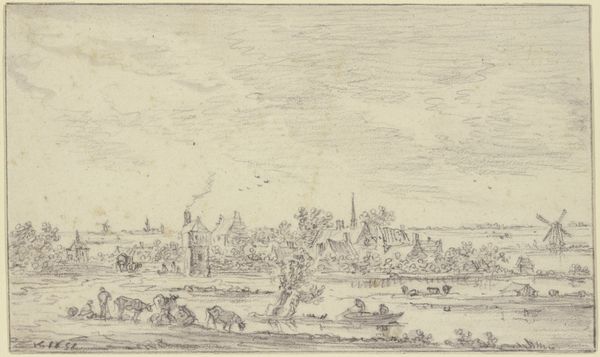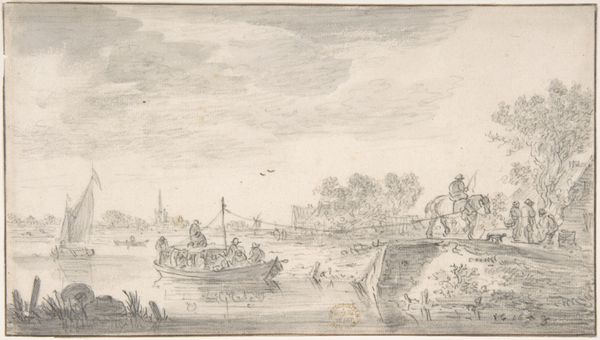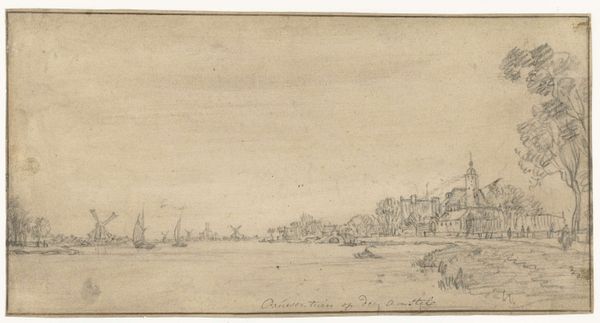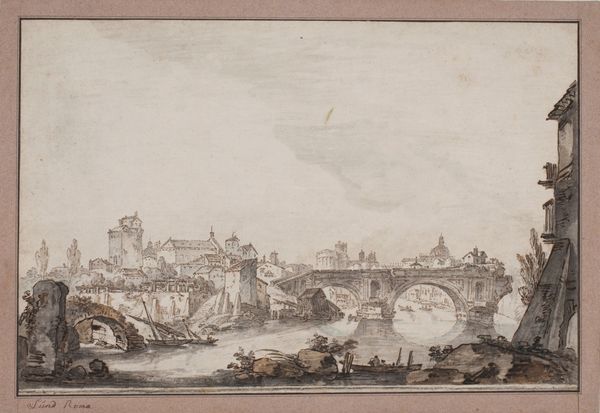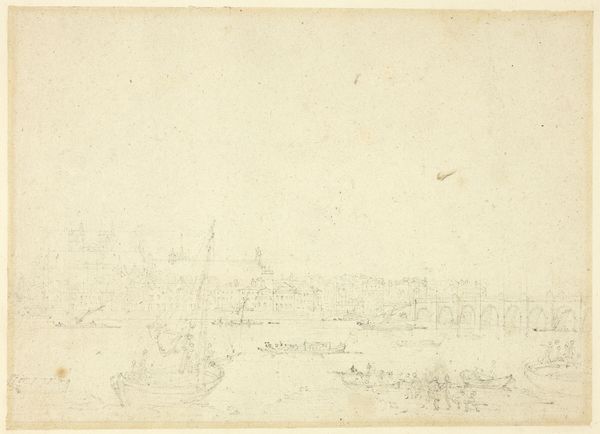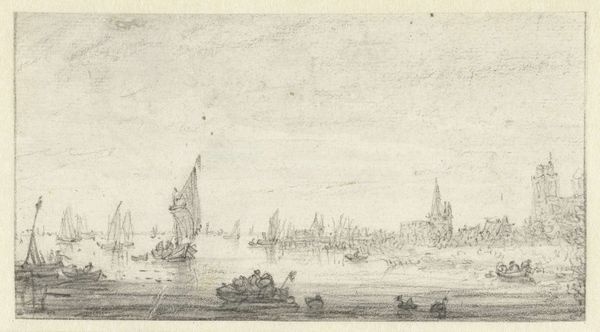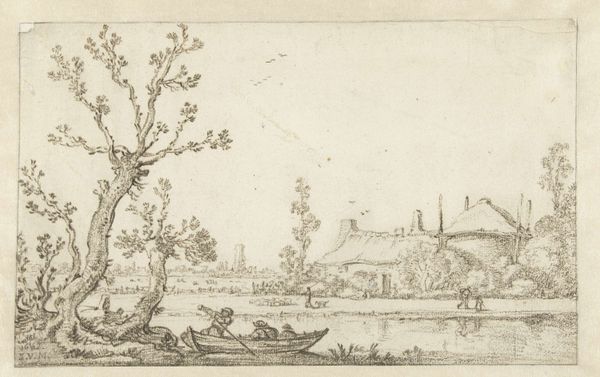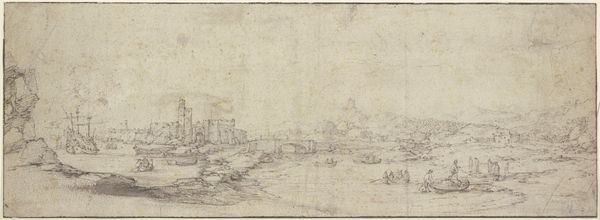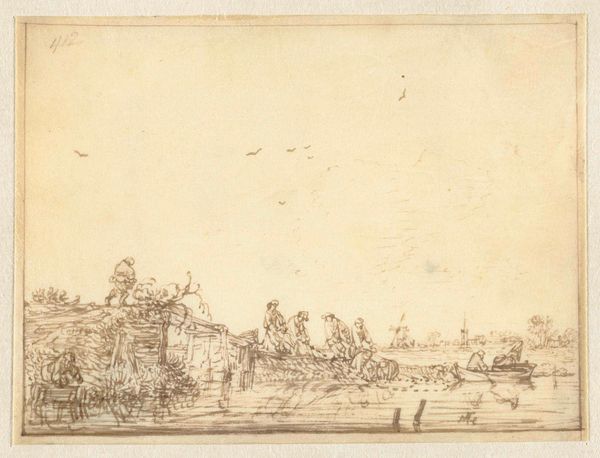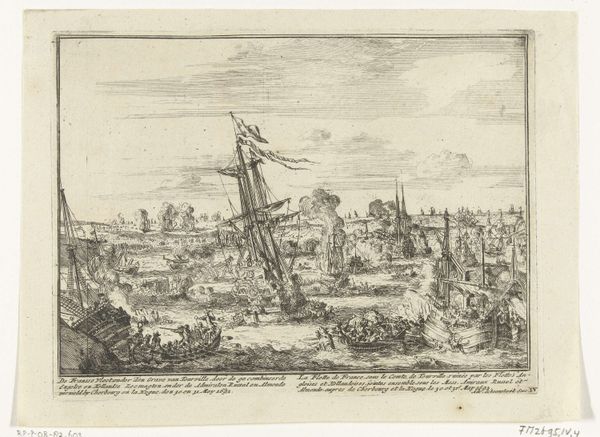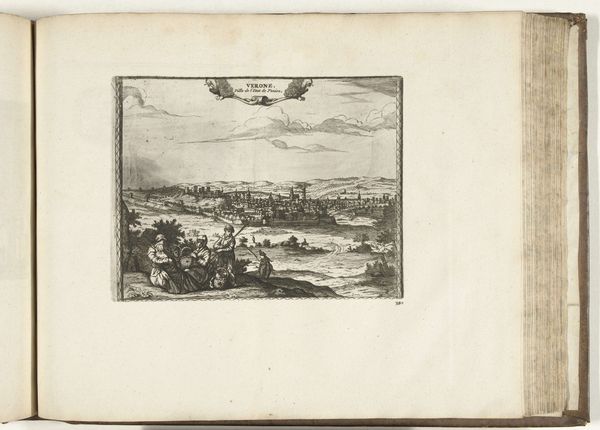
drawing, paper, pencil
#
drawing
#
dutch-golden-age
#
landscape
#
paper
#
pencil
#
cityscape
Dimensions: height 167 mm, width 269 mm
Copyright: Rijks Museum: Open Domain
Editor: This is Aelbert Cuyp's "Landscape with a Village and a Stone Bridge," likely made between 1630 and 1691. It's a pencil drawing on paper, and there's a sort of quiet stillness to the scene, like a memory half-forgotten. What symbols or recurring motifs do you see in this piece? Curator: What strikes me immediately is the subtle interplay between the man-made structures and the natural world. The windmill, the church spire, the bridge – they all punctuate the landscape, yet are integrated into the scene almost seamlessly. Think about the cultural significance of windmills in 17th century Holland. They weren't just practical; they represented ingenuity, prosperity, and control over the environment. What does it mean to juxtapose the windmill against a more imposing religious structure like a church? Editor: I see what you mean, they're both these beacons on the horizon but they represent really different values, don't they? Is the bridge significant too? Curator: Bridges are particularly interesting visual icons because they represent transitions, both physical and metaphorical. A bridge allows connection across a divide – water, a valley, or even a social or cultural barrier. But this bridge, particularly as depicted, is not a grand, imposing structure signifying power. Instead, it’s rather humble, almost swallowed by the landscape, perhaps underscoring the relationship between humanity and nature. What emotions does the bridge evoke within you? Does it seem inviting or isolating? Editor: I think...inviting? Like it's a way to pass through and beyond the village, and towards new opportunities or at least just another place. Curator: Precisely. The bridge, windmill and spire, aren’t isolated details; they exist within a broader narrative about Dutch identity and their negotiation of the natural world. The drawing itself as a fragile artifact, carrying these echoes from the Golden Age and reminding us that we're always in dialogue with our cultural inheritance. Editor: That gives me a lot to think about; I never would've considered all those cultural associations just by looking at it. Curator: It's amazing, isn't it, how a simple landscape can hold so many layers of meaning.
Comments
No comments
Be the first to comment and join the conversation on the ultimate creative platform.
